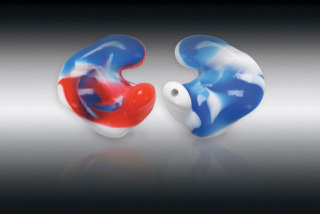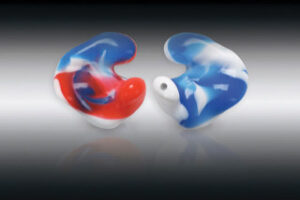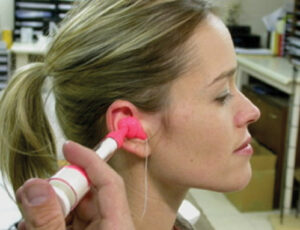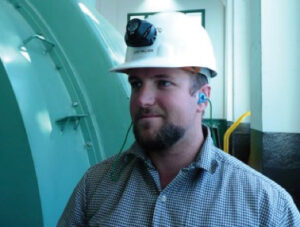- 800.525.2690
- [email protected]
- Mon - Fri: 8:00 - 4:30
Custom-Molded Hearing Protection in Hearing Conservation Programs
We respect all the manufacturers of such equipment and professionally join in the need to make premium products that work while minimizing the complications they can cause the environment.

By: Garry Gordon, MS, and Robert M. Traynor, Ed.D., MBA, F-NAP, Contributors
In the workplace, when noise levels and exposures exceed OSHA guidelines, industry is required to provide adequate hearing protection as part of a comprehensive hearing conservation program. Several providers now offer custom-fit hearing protection devices (HPDs).
These options present questions and, sometimes, concerns from safety managers, hearing conservation providers, workers and corporate executives responsible for those managing hearing impairment as a byproduct of device production. These concerns are amplified when deciding among hearing protection styles, especially when considering custom-molded products. This article will discuss the advantages and limitations of custom-molded hearing protection devices (CMHPDs).
Benefits of CMHPDs
 There are numerous advantages to CHMHPs:
There are numerous advantages to CHMHPs:
- – When properly fit with high-grade silicone material, there is a high acceptance by users, as they can be worn comfortably for extended periods of time.
CMHPDs provide dependable attenuation. - – Independent and military laboratories have reported fewer recordable standard threshold shifts using CMHPDs.
– When properly made with high-grade silicone materials, CMHPDs can be used for at least three years and, under some conditions, even longer.
– CMHPD options are numerous and may be designed to provide full occlusion of the ear with estimated NRRs of 30-32dB across the frequency spectrum or with filters for situational awareness (NRRs 7 -21dB).
– CMHPDs offer improvement for communication systems, including noise-reduction features that enable better hearing in noise while attenuating loud sounds.
While these products are cost-efficient and beneficial, there are some variables that must be evaluated seriously before their adoption.
While these products are cost-efficient and beneficial, there are some variables that must be evaluated seriously before their adoption.
Variables of Using CMHPDs in Hearing Conservation Programs
- Successful fittings of CMHPDs that ensure maximum comfort and attenuation characteristics are conducted by individuals specially trained in the best practice methods of taking ear impressions. Ear canal shapes and sizes are as unique as fingerprints; no two are exactly alike. Ear impressions must be taken safely with no artifacts impeding the fabrication of the CMHPD.
Some companies choose CMHPD providers that offer an on-site ear impression service with a traveling, professionally trained staff that has verification of liability insurance. Others prefer to use members of their own staff, such as nursing or safety employees properly trained to obtain ear impressions. Either of these options allow for significantly less worker down time, as they simply go to a central position within the plant for the impressions. There are also “do-it-yourself” kits. While a less expensive option, these may be dangerous and result in ill-fitting CMHPDs, injury to the ear, reduction of comfort and a reduction of the NRR ratings.
Once the impressions are obtained, the next concern is making sure the CMHPD will be used by the worker. The most popular choices use high-grade silicone and do not shrink over time. They are also water repellant (hydrophobic) and, in many cases, float on water. These products offer two options:
- – The use of a two-part silicone that, when properly mixed can be cured in the ear as the impression sets up. Once removed from the ear, it can be inspected for fit and fabricated on-site.
- – An alternative is to simply deliver the impressions to the laboratory in the form of a digital file. The data in the file is then used to fabricate the CMHPD. An additional benefit: if the worker loses their set of CMHPDs, a new set can be manufactured immediately without the need for new ear
impressions.

Technology is on the horizon that will scan the ear, ear canal and tympanic membrane (eardrum) via 3D-scanning, computerized techniques—thus eliminating the need for ear impressions. This technology will be able to supply all the information required to fabricate CMHPDs.
Another concern is the acceptance of CMHPDs. Most companies offer CMHPDs to employees who do not like or cannot use the generic or disposable earplugs or earmuffs. Workers who are exposed to the most noise and need HPDs all day find CMHPDs are very comfortable and provide the most efficient attenuation available.
NRR vs. Personal Attenuation (PAR)
The critical measurement of HPDs is the amount of protection the worker obtains. A common perception is that, if the NRR is 33dB, then the worker is obtaining a 33dB attenuation from the HPD. The NRR is an earplug attenuation measurement that is taken in a laboratory under controlled conditions. The PAR is the actual amount of attenuation in dB provided by the HPD within an in situ or in-use situation. Thus, the NRR laboratory measures and the PAR individual user measures do not correlate well.
To complicate the direct use of the NRR further, Berger, Voix & Harper (2008) found that many individuals using disposable and reusable HPDs were significantly under-attenuated, relative to the noise levels present, due to insertion variations. Thus, they were non-compliant according to OSHA standards.
To ensure compliance for HPD use in high-noise areas, the data of Berger et al (2008) was used by the Council for Accreditation in Occupational Hearing Conservation (CAOHC) to derive a formula to allow for the use of the NRR in predicting the PAR measurement. This formula for estimating the PAR, or derating, is the label’s NRR-7dB/2. For example, if the NRR was 31dB on the label, the predicted PAR for that device would be 12dB. In this example, if the noise level was 95dB, 95dB-12dB = 83dB, the facility would be OSHA-compliant at 83dB.
We now have audiometers that can measure PAR as part of a baseline or annual hearing test. The most common technique is a program that is incorporated into most computerized audiometers. Essentially, the hearing is tested without the HPDs, then HPDs are inserted, and another hearing test is conducted. These programs then conduct calculations on both the threshold measurement and the assessment with the HPDs to obtain the PAR. This method offers an in situ PAR rating which allows direct reduction of the PAR from the noise levels to arrive at the amount of actual hearing protection for the worker.

In actual fit-checking of workers using HPDs, a Salt Lake City (2012) study found, in PAR testing of 40 subjects, variability for reusable/disposable HPDs ranged from 5dB PAR to 39dB PAR, while testing CMHPS devices achieved a consistent PAR of rating 35.8dB. Conducting a PAR test allows for accurate assessment of the amount of protection offered by various HPDs and the ability to predict how much protection is derived from a particular HPD on a specific individual.
Cost can be an issue in the use of CMHPDs. While more expensive than generic plugs, CMHPDs are often more cost-efficient, as they may be used for three or more years by a worker that uses hearing protection all day, every day. Depending on the type of CMHPDs selected, costs can range from $7-10 for room temperature-cured molds, fabricated on-site by professionally trained company staff or, when hiring an outside professionally trained provider, approximately $65-95 per set.
As with many other product purchases, the volume of the CMHPDs required by the company to outfit its workers affects the discount price offered by outside, professionally trained providers. Pricing for digitally recorded laboratory molds begin near $110 per set and increase in price if filters and/or radio communications are added.
The variables in hearing protection are not simply the size of the ear canal, but a combination of size and geometry, which varies significantly in the noise-exposed employee population. Often, when using the CMHPDs, companies have found their on-going cost for disposable hearing devices is dramatically reduced, and employee acceptance of hearing protection is much higher than with the disposable products. For example, if an employee uses two pairs of disposable plugs per day at $0.18 per set, or $0.36 per day at roughly 260 workdays a year, this results in an expenditure of $93.60 each year, per employee, for disposable hearing devices. The average price of a set of CMHPDs for a worker is $75, and they have a duration of three years. Thus, for 100 workers using two sets per day, the price of disposables for a three-year period would be $28,080, while the cost of CMHPDs for the same period would be $7,500 for the three-year period. Further, the workers would be protected more comfortably with better attenuation, reducing the possibility of standard threshold shifts. Ultimately, the use of CMHPDs becomes a smart business decision.
For safety managers and occupational hearing conservationists concerned with the efficiency of HPDs within their hearing conservation program, the use of CMHPDs augmented by fit-checking is an effective method of providing the most comfortable, accurate noise reduction, as well as cost-efficient hearing protection.
———
References:
Berger, E., Voix, J., & Hager, L. (2008). Methods of fit testing hearing protectors, with representative field test data. 9th Congress, Noise as a Public Health Problem. ICBEN.
Salt Lake City (2012). Fit Check Attenuation Measurement.
